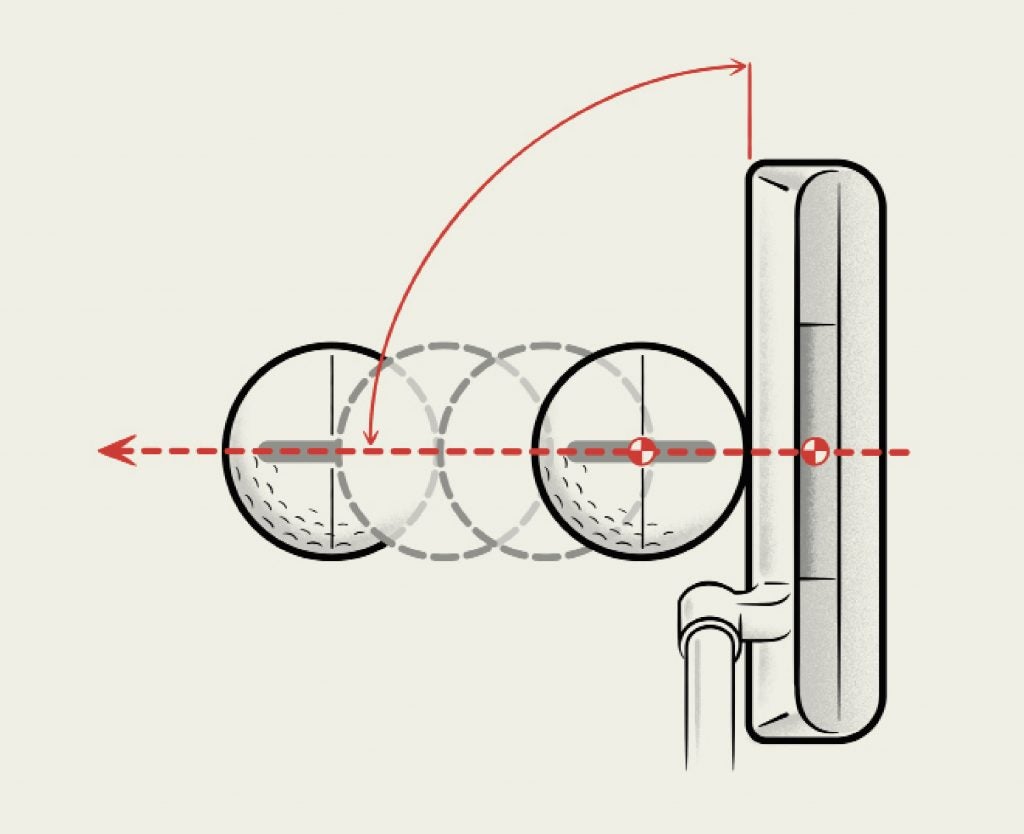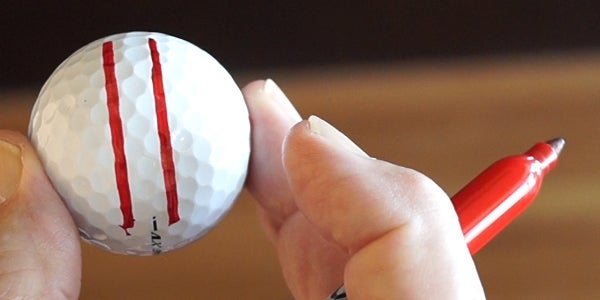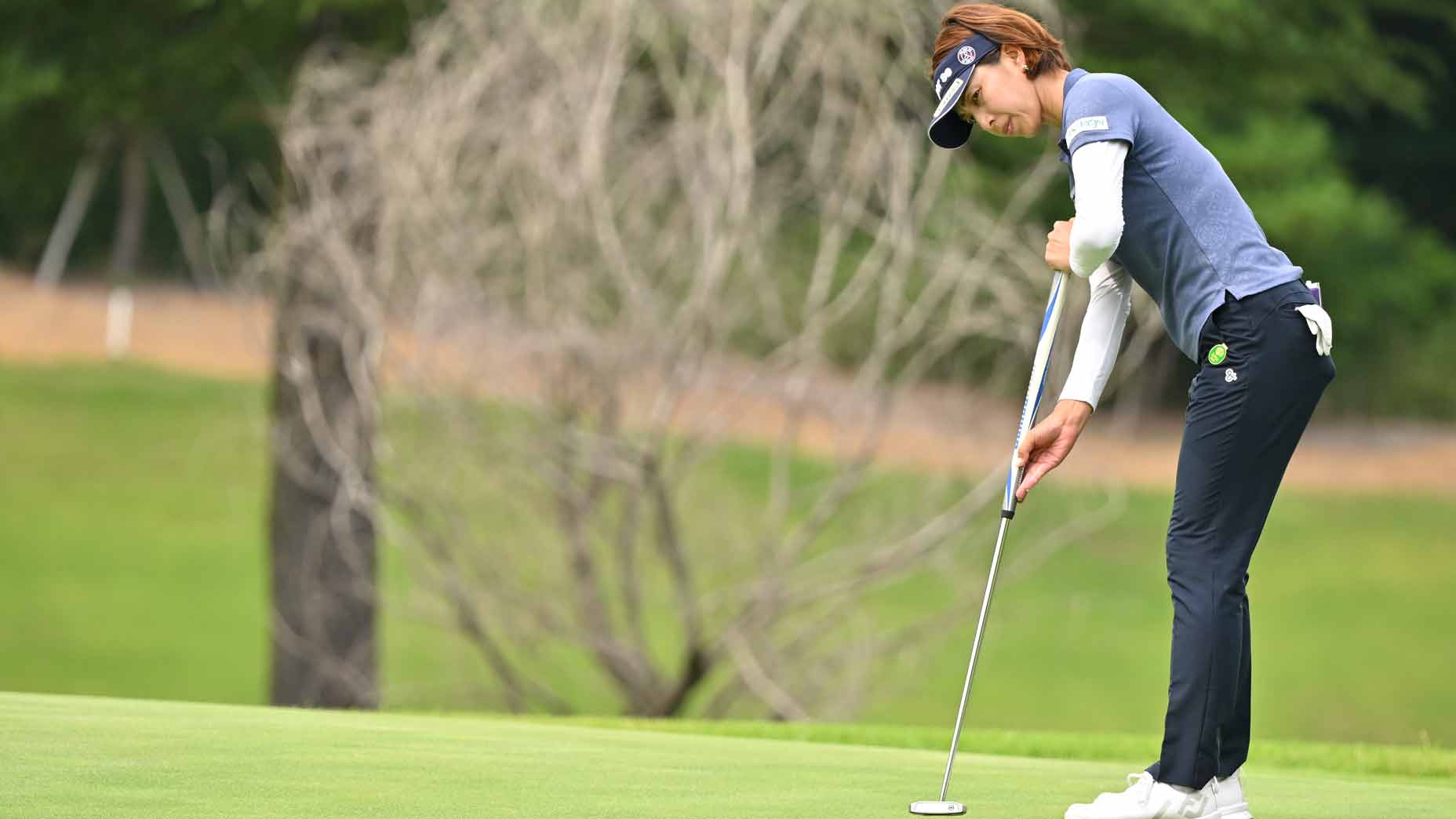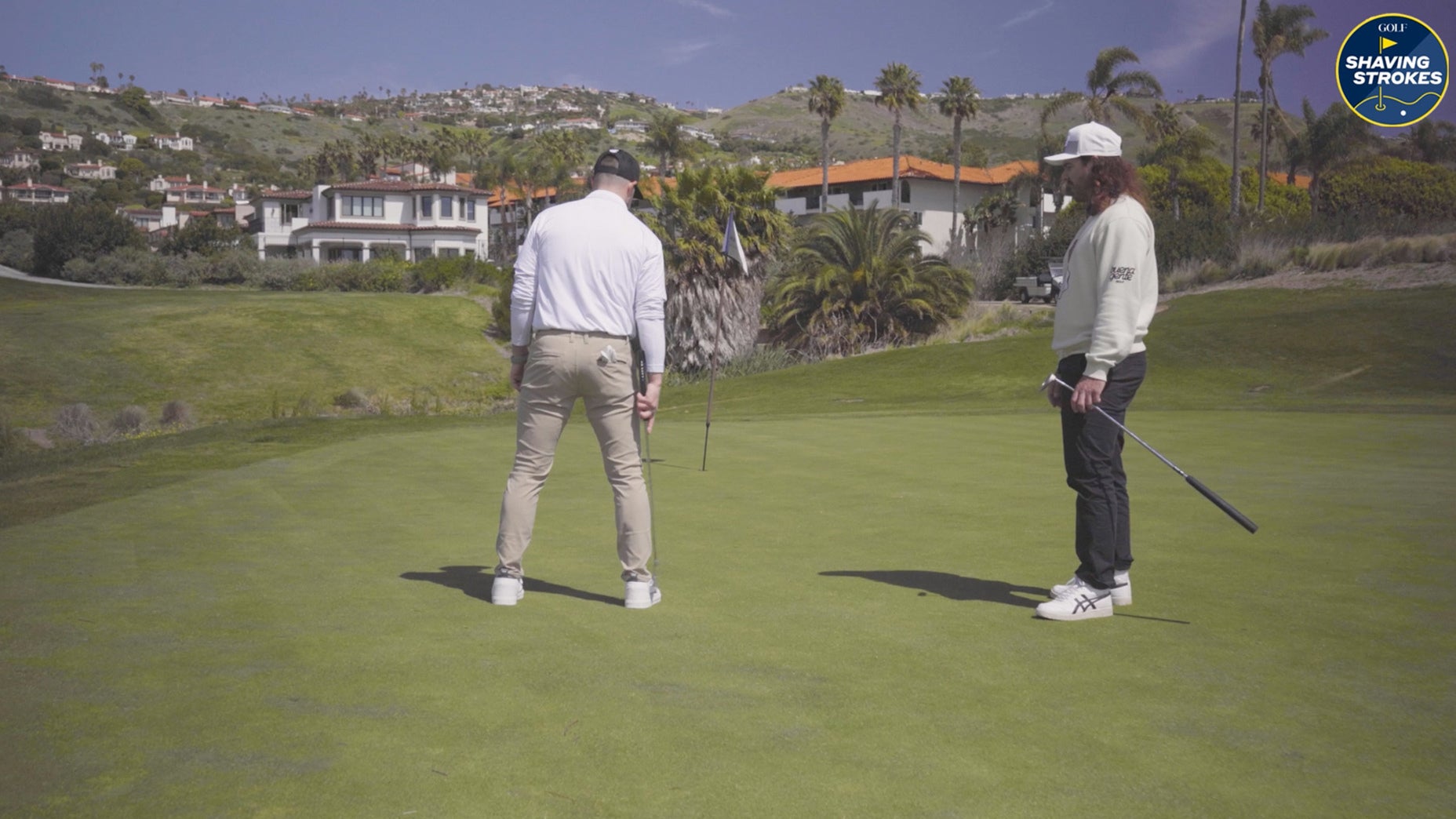Imagine, if you will, that your putter isn’t a putter. It’s a very low-power rifle, capable of precise aim and the ability to roll putts at perfect speeds. You and your “rifle” are on the green, staring down a 10-foot putt. You read the slope and aim the rifle one cup outside the left edge of the hole, which means you expect this putt to break about 6 3 / 8” (a cup measures 41⁄4” in diameter; a half cup is 21⁄8”) to the right and into the center of the cup. You visualize the ball starting on your aim line, rolling end over end in a slow arc, over the green and dropping over the lip, all at perfect speed. Honestly, what could be more perfect?
Aim and speed. That’s all you need. But how do you get it?
Of course, in real golf, we use putters, not rifles. So there’s an added complication.
Making sure your putterface is square to the target at impact. Doing so is the single-most important element of your stroke, and the primary arbiter of whether the ball will or won’t start on your intended line.

The moment of impact is critical to putting, and because there’s motion involved, it’s impossible to see precisely what’s happening. Are you square? One thing’s for certain: The work you’ve done green reading, aligning and judging speed is lost if you’re not. A miss may or may not always tell you what you need to know. Was your putterface open or closed at impact? Did it cause a pull or push? Did you hit the putt on the toe or heel? Or did you play the wrong amount of break? These are all valid questions.
Most golfers immediately blame their stroke following a miss, but in my 30-plus years of researching this part of the game, a faulty putterface angle at the moment of impact is most often the culprit. I often talk about the importance of practicing with the right feedback, and this is especially true when it comes to producing a square putterface at impact. I developed a training aid, the O-Ball, a while back that made it obvious to the user that he or she had failed to square the face at impact—lines encircling the equator appear to wobble as the ball rolls. Many Tour players draw lines on their golf ball to simulate this effect.
Try it: Mark a line around the ball, aim it at your intended target and putt. If you stroke the ball with zero face-angle error, the lines on the ball will roll vertically with no wobble.

If you have a slight face-angle error at impact or contact the ball toward the heel or toe, the lines will indeed appear to wobble, as they do with my O-Ball. And if you have a large face-angle error at impact, the lines will disappear altogether, becoming a blur. Only with a truly square strike at impact will you achieve a true and pure roll. Master that skill, and your distance control will improve as you groove a more consistent strike.
You’ll start more putts on line and take the confusion out of green readings. Better yet, you’ll have enough feedback to help you improve in the future.
On good strokes that miss, you’ll learn if your green reading or putt speed is off. That’s one less variable to worry about. Not every stroke will be perfect, but as long as you’re learning, you’re improving. The more you learn, and the more square-strike putts you produce on the greens, the more you’ll make
That’s as square a deal as I can offer.






